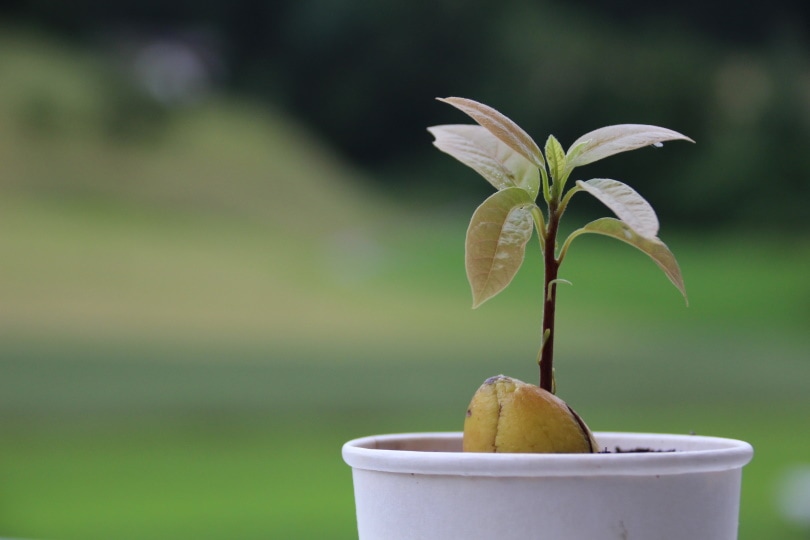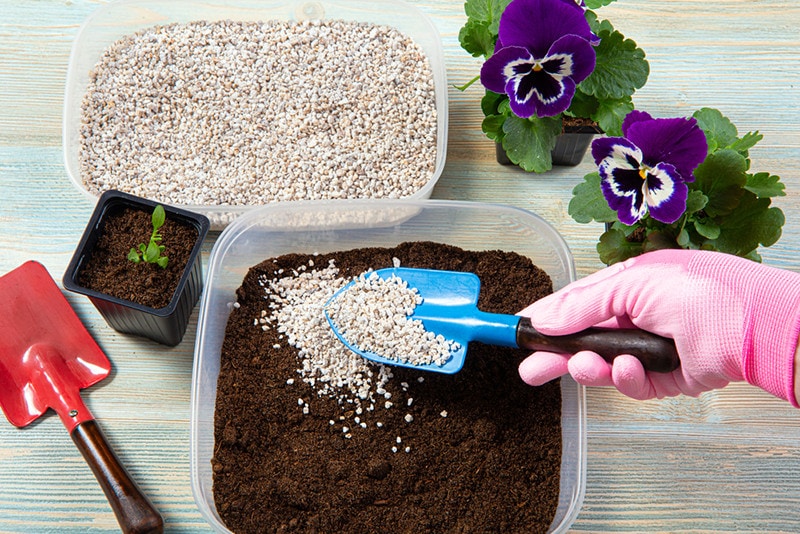How to Make Potting Soil for an Avocado Tree: 3 Simple Steps
-
Pete Ortiz
- Last updated:

While not all fruit-bearing trees do well indoors, avocados are similar to citrus in that they’re easy to grow and care for in pots. However, they have specific preferences like any other tree. Tailoring your growing conditions as close to the avocado tree’s ideal conditions as possible will reward you with a strong, healthy tree and lots of tasty avocados for years to come.
To help you get a head start, we’ve written up a step-by-step guide with everything you’ll need to get started growing your own potted avocado tree today.
Before You Start
As these plants have very shallow roots, avocado trees demand loose and well-aerated soil, which makes sandy loam the ideal soil archetype for them. Avocado trees are nearly impossible to grow in compacted or heavy clay soils, where their roots struggle and become vulnerable to fatal root rot.
They tolerate both acidic and alkaline soils between 5.0 and 7.0 on the pH scale but tend to do better in slightly acidic soil. You can neutralize acidic soil with lime and temper alkaline soil with sulfur.
Other vital requirements worth mentioning are warmth and humidity. Avocados are native to humid regions of Central and South America, but Florida has developed their own Hess avocado as well. The trees prefer a temperature between 60 to 85 degrees Fahrenheit, with an ideal humidity between 60% to 80%. Sixty percent is fine indoors, but if you want to go the extra mile, you can buy a humidifier.
The last thing to touch on is your pot. Avocado trees need to grow large indoors to produce avocados, so we recommend starting out in a large pot—at least 15 gallons or so. Terracotta pots are the most common, and drainage holes in the bottom are a must-have.
To accomplish our goal of a loose, well-draining soil, we’ll be using several ingredients along with a commercial potting mix for a base. Gather these up and we’ll get onto the step-by-step guide.
- Commercial potting mix (desired bag size)
- Coarse sand
- Pine or fir bark chips
- Decomposed granite
- Perlite
- Compost/aged manure
- Sphagnum peat moss/coconut coir
The 3 Steps to Make Potting Soil for an Avocado Tree
1. Add Sand, Perlite, Granite, and Bark for Drainage
Pour your potting mix into a large bucket and add coarse sand, perlite, decomposed granite, and fir/pine bark. Each has unique properties that help keep your avocado tree soil nice and loose.
Coarse sand is simply sand that’s a bit chunkier than beach sand, and it holds water and nutrients very poorly. Instead, its primary job is to create tiny air pockets within the soil mix and allow oxygen to reach the tree’s roots. Water and other nutrients can use the air pockets too.
Perlite is a lightweight, inert substance very similar to Styrofoam. You may have seen it in potting mixes before. It prevents soil compaction, which we know is invaluable for avocado trees.
Decomposed granite is a morbid way to say chipped granite, which helps to improve drainage and anchor your tree’s vulnerable, shallow roots.
Last but not least, pine or fir bark chips mixed in the soil creates larger air pockets, which may be overkill for sufficiently loose soil. Use your best judgment as to whether your soil mix feels loose enough for your liking. If you’re not sure, add some bark to be safe.

2. Mix in Compost or Aged Manure
Avocado trees love fertile soil, and what better than compost or classic aged manure? Compost can be made at home by chucking leaves, fruit rinds, and other organic waste into a large bin, and manure can be sourced from tractor supply or gardening stores. Both are very high in organic nutrients that your avocado tree’s roots crave.
Compost is free to make but can take a long time to break down and become suitable for gardening. By contrast, manure is higher in raw nitrogen but takes months or more to decompose and release it for your tree to use.
3. Peat Moss or Coconut Coir for Water Retention & Drainage
Peat moss and coconut coir are the two best and most popular soil amendments for helping both water retention and drainage. They do this because they’re both fibrous materials that can hold about 20 times their volume in water, slowly wicking it away. This provides the perfect time frame for your avocado tree to suck up water without becoming waterlogged and risking root rot.
Peat moss is the classic choice here, holding more nutrients than coco coir but decomposing more quickly. Others hail coco coir as a sustainable alternative with similar performance, and there’s little consensus on the subject. Generally speaking, coco coir is best for neutral or acidic soils, while peat moss is acidic and helps alkaline soils.

Conclusion
Hailing from Central Mexico, avocado trees prefer warm weather and sandy, fertile soil. You can make your own potting soil mix with a handful of common ingredients, though granite is a fairly recent one. Feel free to use this mix as a base and adapt as necessary.
Featured Image Credit: monikabaechler, Pixabay
Contents


